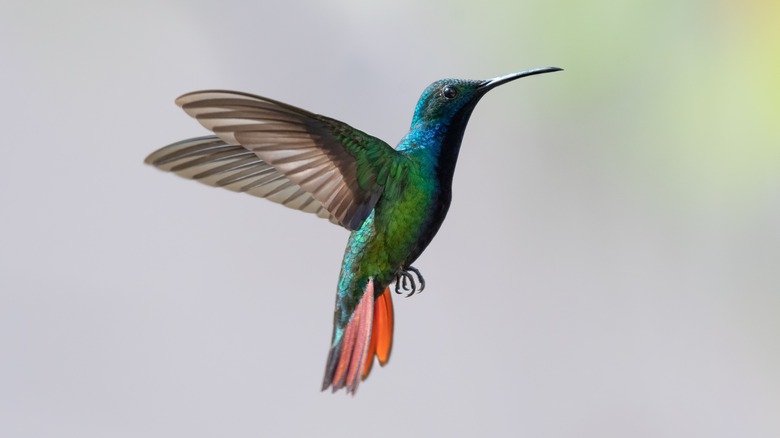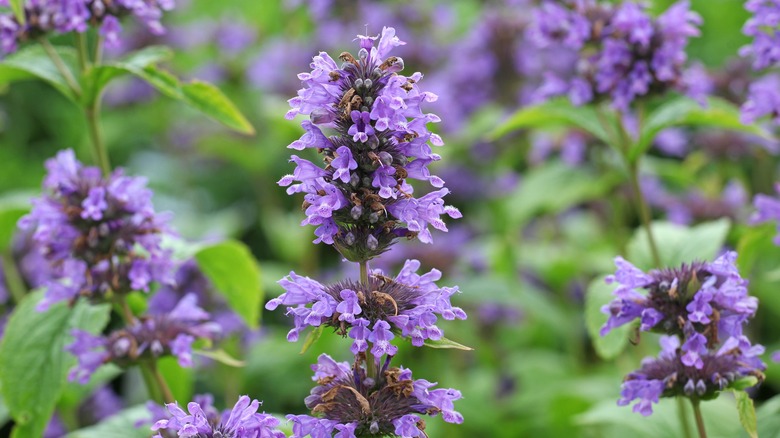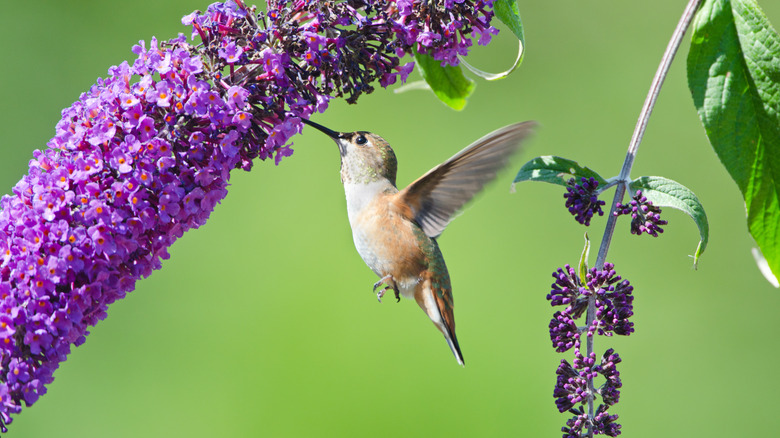This Purple Plant Will Fill Your Garden With Hummingbirds And Butterflies
Hummingbirds and butterflies are both important pollinators that can benefit your garden and your local ecosystem. By growing anise hyssop (Agastache foeniculum) – one of the flowers that hummingbirds absolutely love – you will attract these birds and all sorts of butterflies, as well as bees, moths, and other nectar-drinking insects. This gorgeous plant with purple flowers can grow up to 4 feet tall, making it a great choice as a border for your yard or home. It is also a good addition to herb gardens, as the plant is edible.
Your anise hyssop will produce its nectar-filled flowers from June to September in USDA hardiness zones 4 to 8. While this native plant can fill your garden with butterflies, hummingbirds, and other pollinators, it's important to note that it will spread through its seeds as well as through horizontal roots beneath the soil known as rhizomes. Because of this, you'll want to plan out where you're planting your anise hyssops, give them space to grow, and cut them back if they spread too far.
Planting anise hyssop in your garden
If you're looking to start a pollinator garden, this plant is a perfect addition. Anise hyssop can be easily grown from seed in pots or directly in the soil of your garden. If you want to ensure that your flowers are blooming as soon as possible, start by planting your seeds inside in small pots approximately six weeks before the last frost of the season.
Make sure that your seeds are only just covered with soil, as they will require sunlight to germinate. Within four weeks, your plants will begin to grow, and once the threat of frost has passed you can move your anise hyssop outside or transfer it into the ground. If you would prefer to grow the seeds outdoors, you'll need to wait until the temperatures have started to warm up. Your seeds should be planted just below the soil with 12 to 18 inches of space between them.
Caring for anise hyssop to attract butterflies and hummingbirds
When you move your anise hyssop into your garden, you'll want to ensure you're planting it in an area with soil that drains well and lots of direct sunlight. While this plant prefers full sun, it will still grow in places that have a little shade. Some seedlings may start to wilt when they are planted in the ground, but should bounce back after a couple of days. Once your anise hyssop starts growing, it won't be long before birds and butterflies flock to your garden, as it will typically bloom the same year that it's planted.
When the plant has become established, only water it if the top several inches of soil are dry. These plants are native to dryer areas of North America and overly wet soils can cause them to develop root rot. Though hummingbirds and butterflies won't be as attracted to your anise hyssop after the flowers fade away, the seeds the plant produces will likely attract other birds, such as goldfinches.


